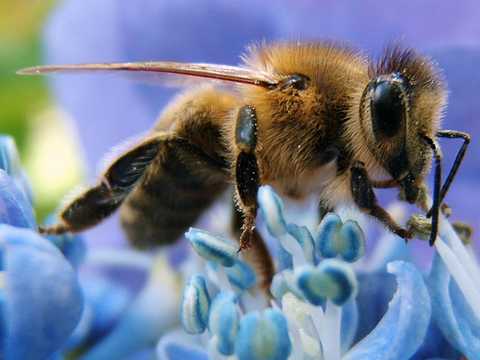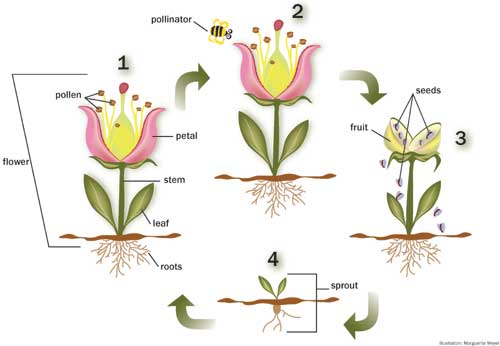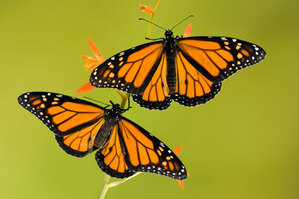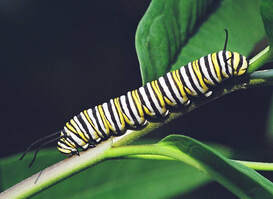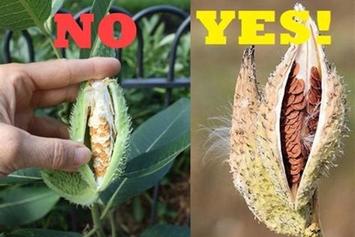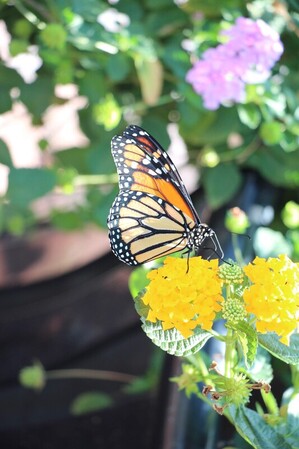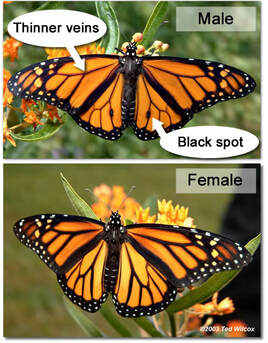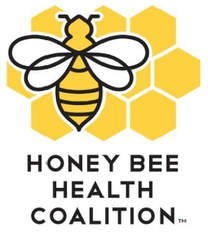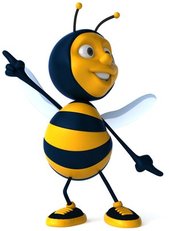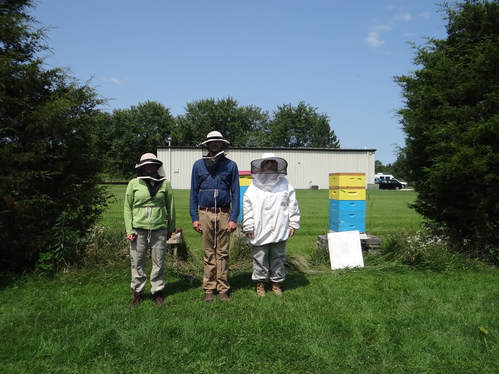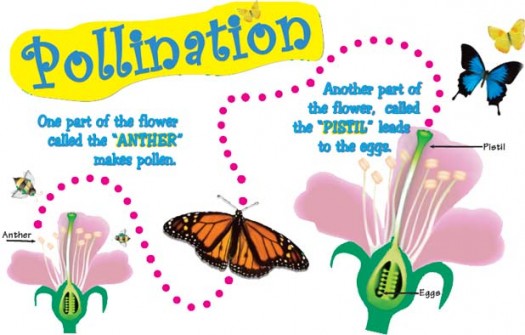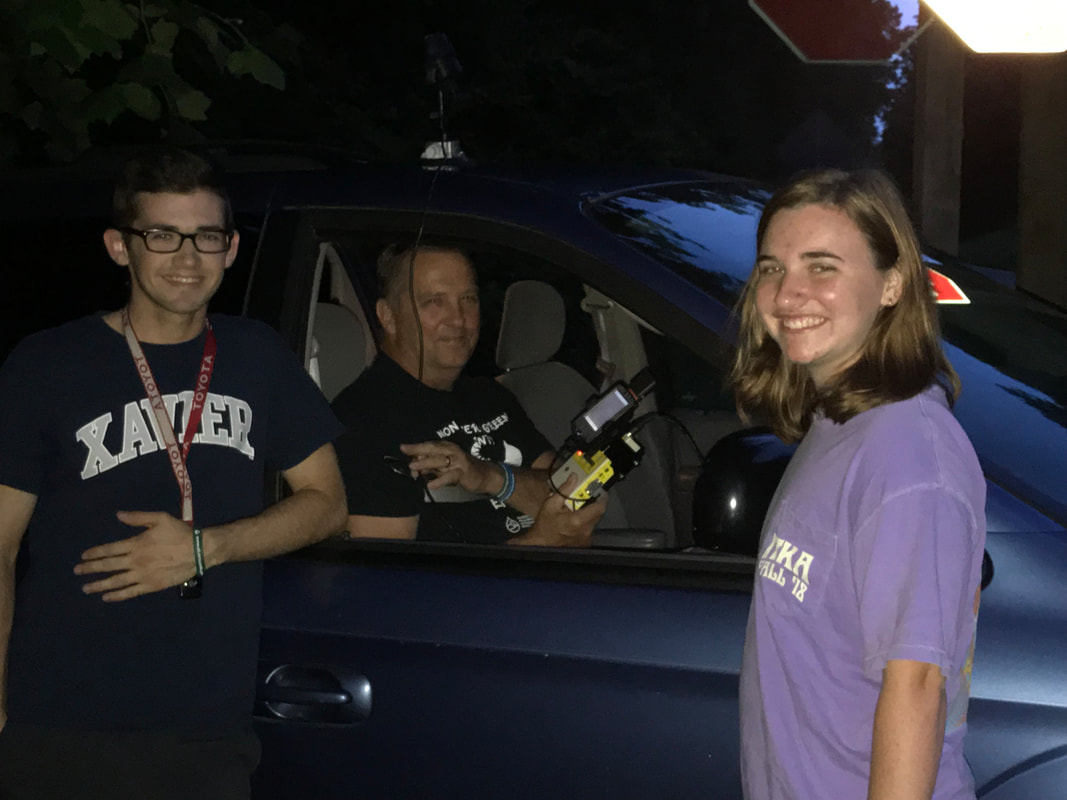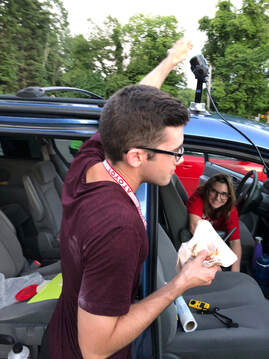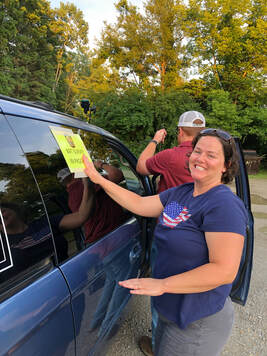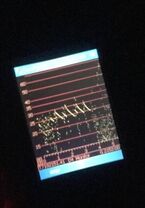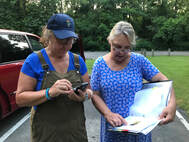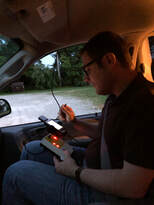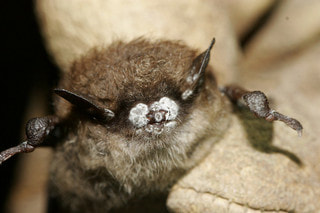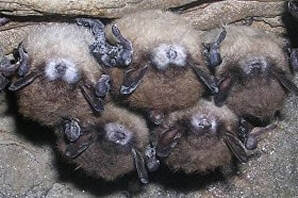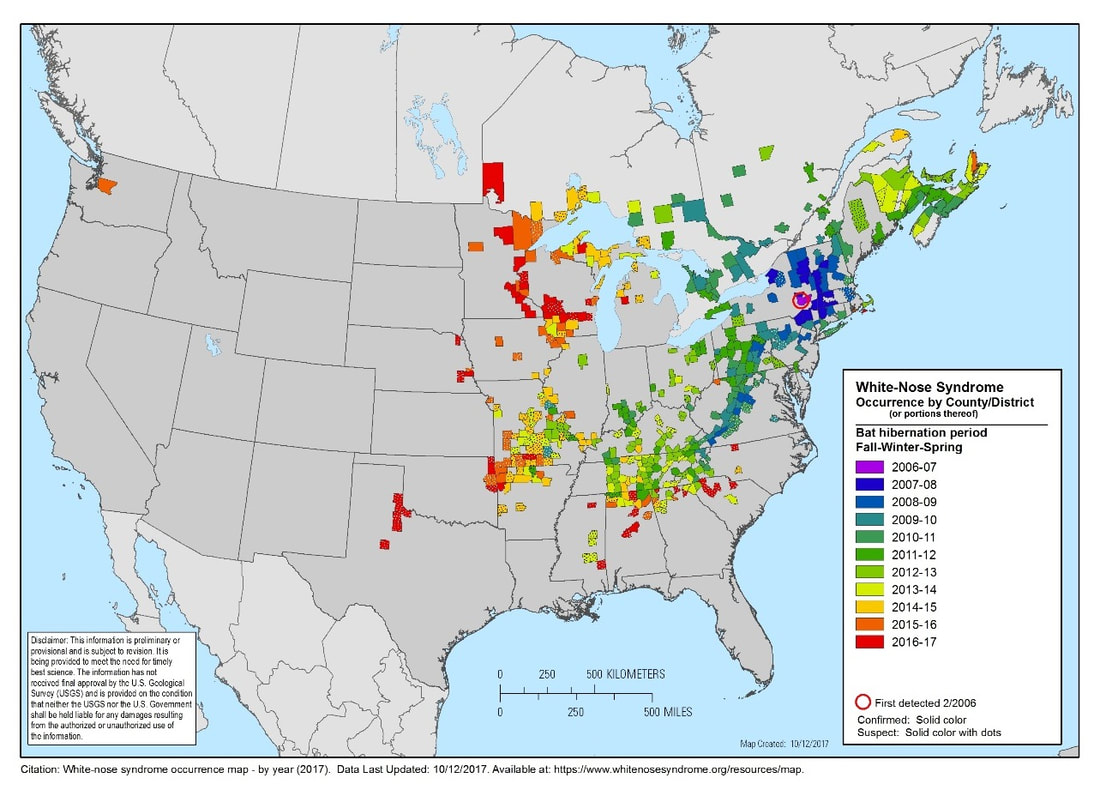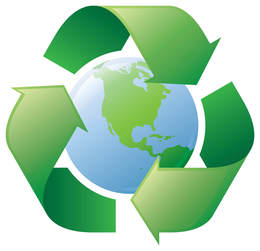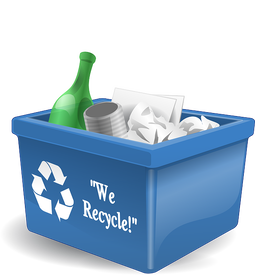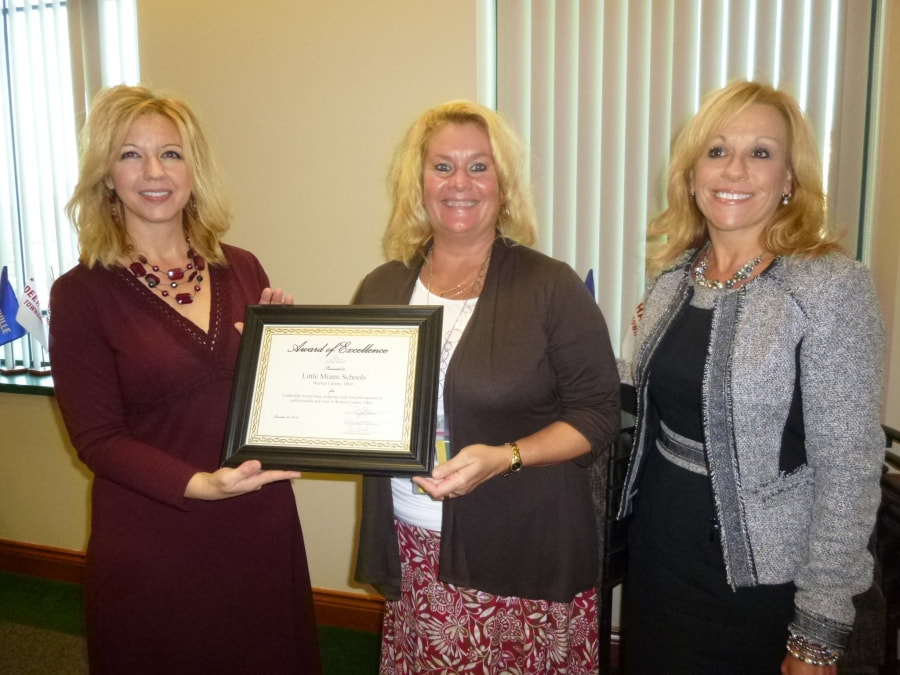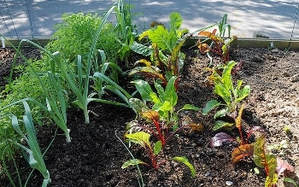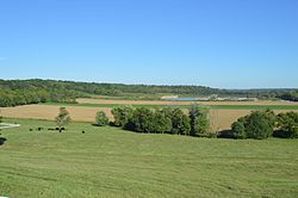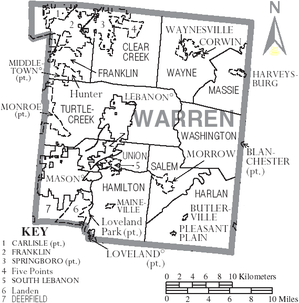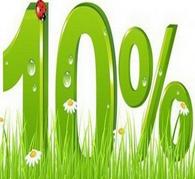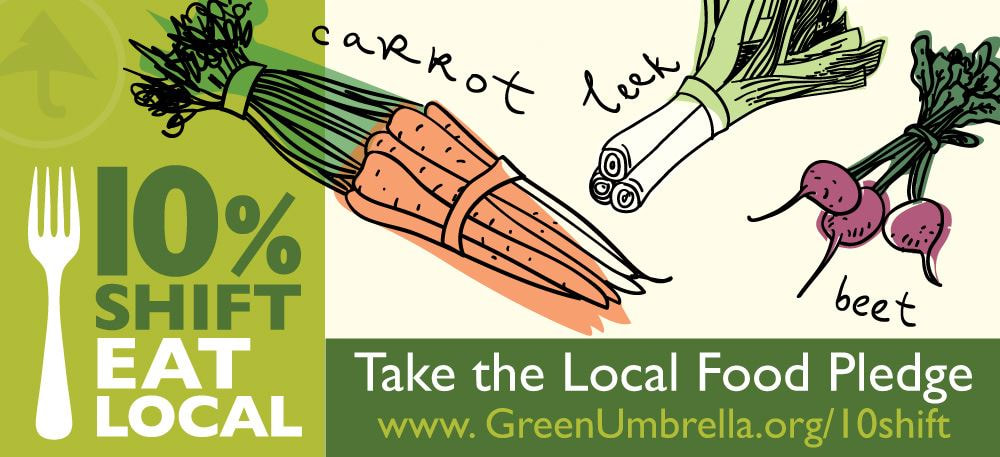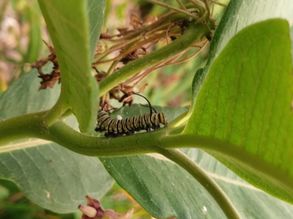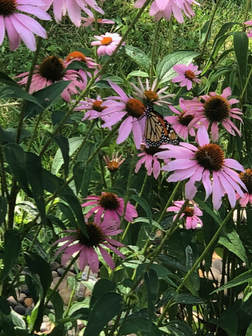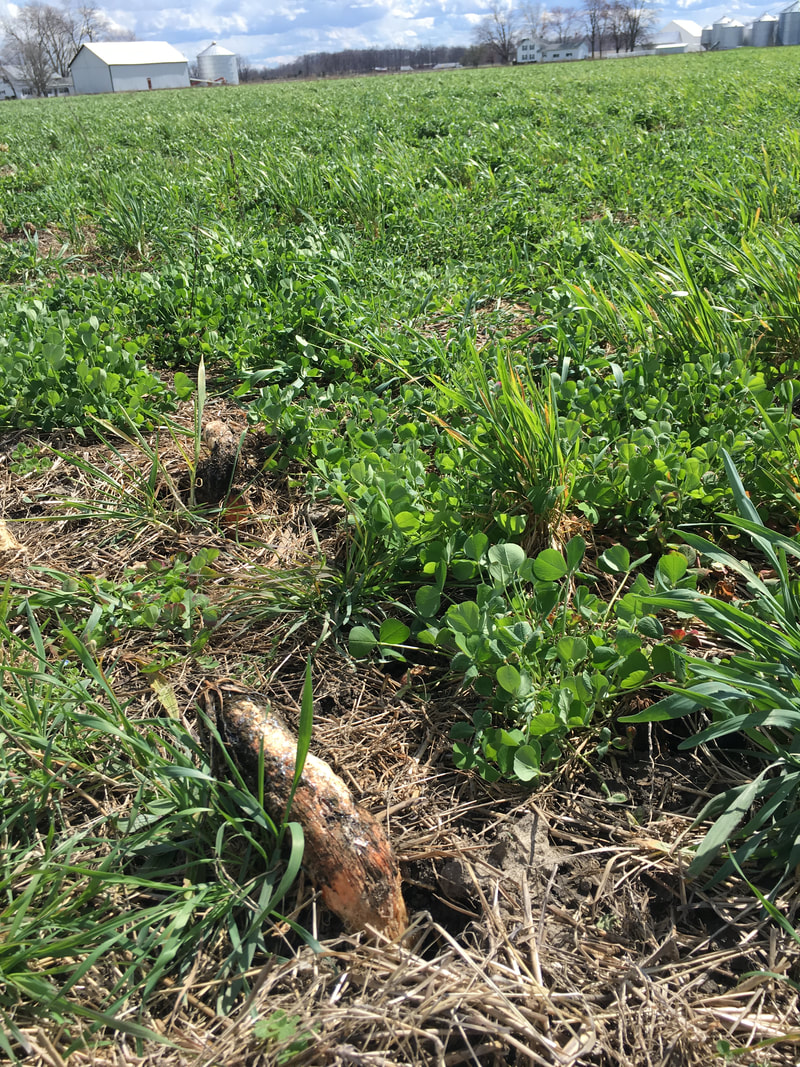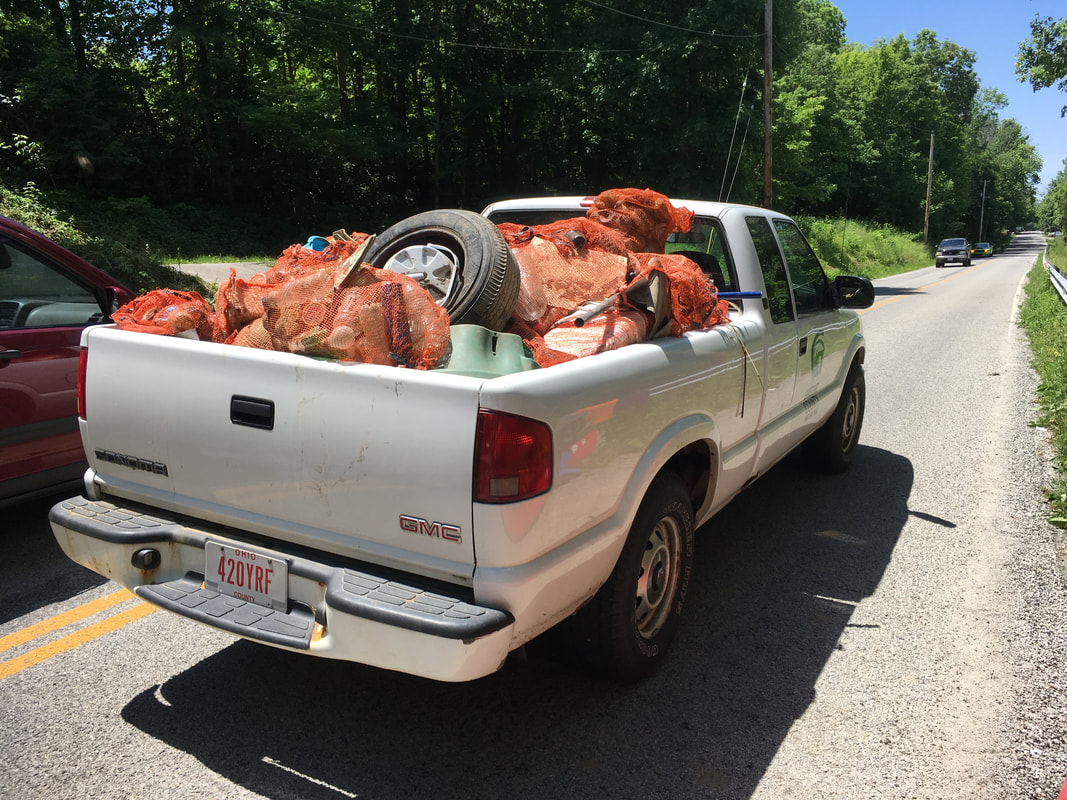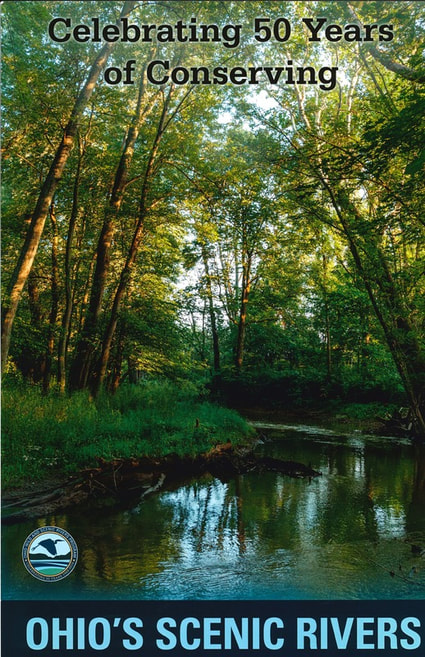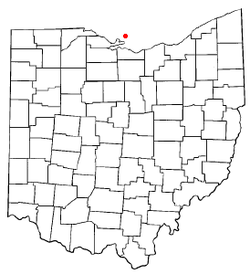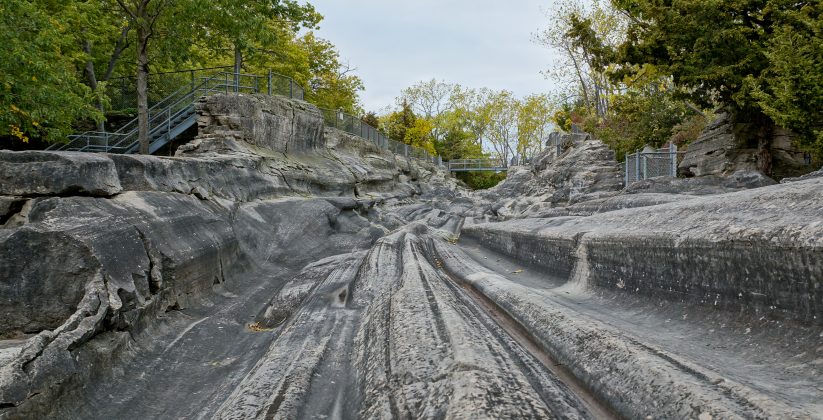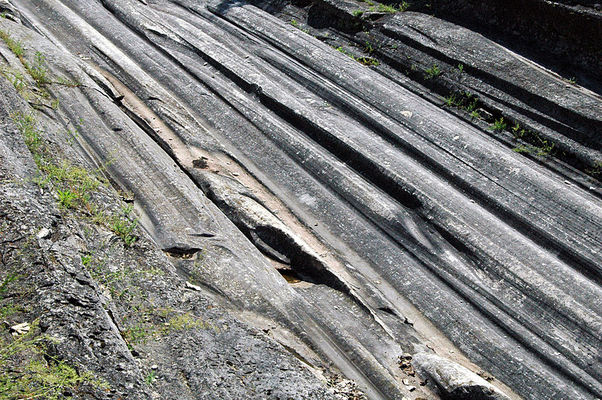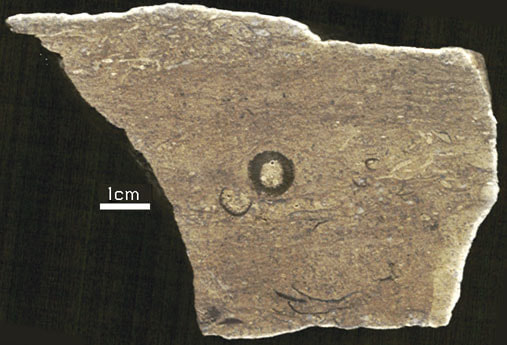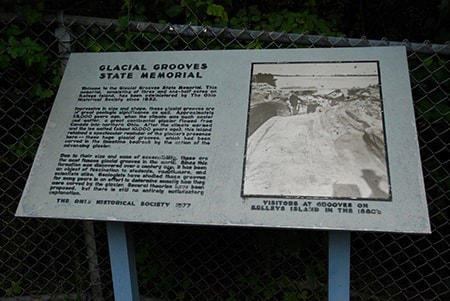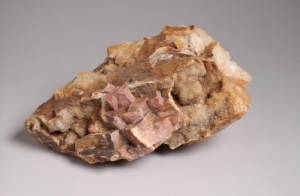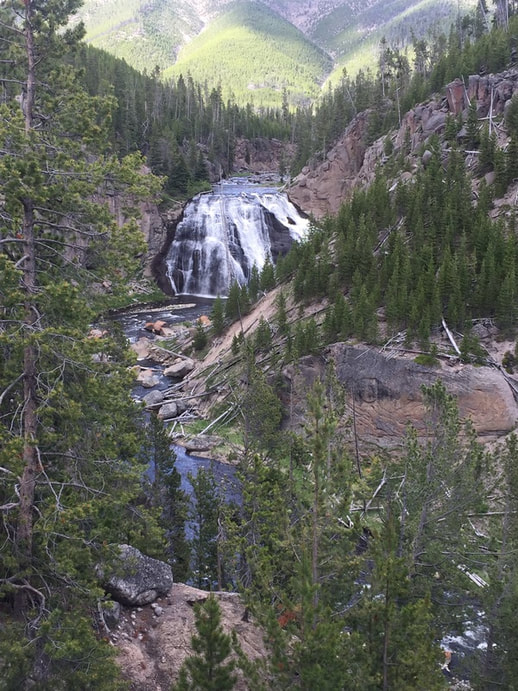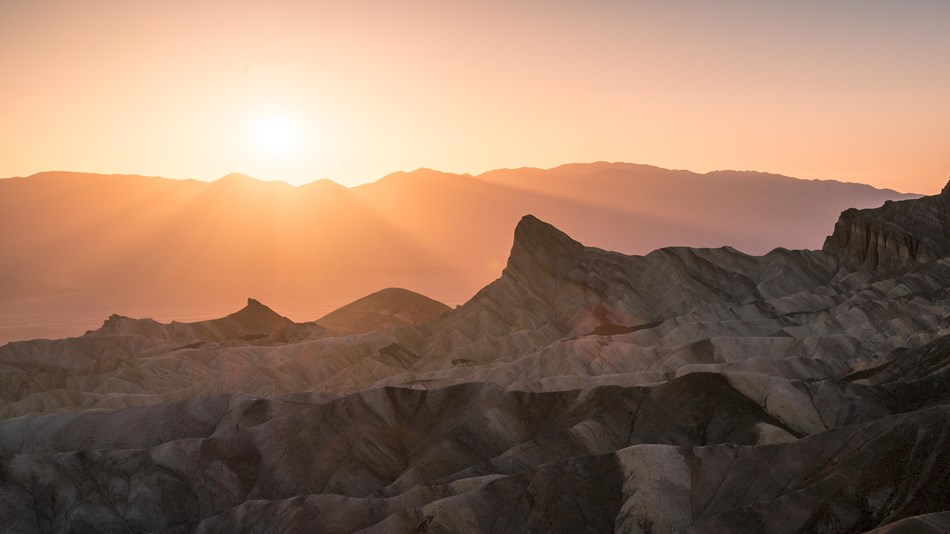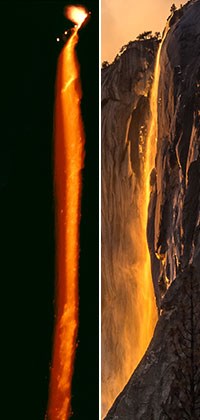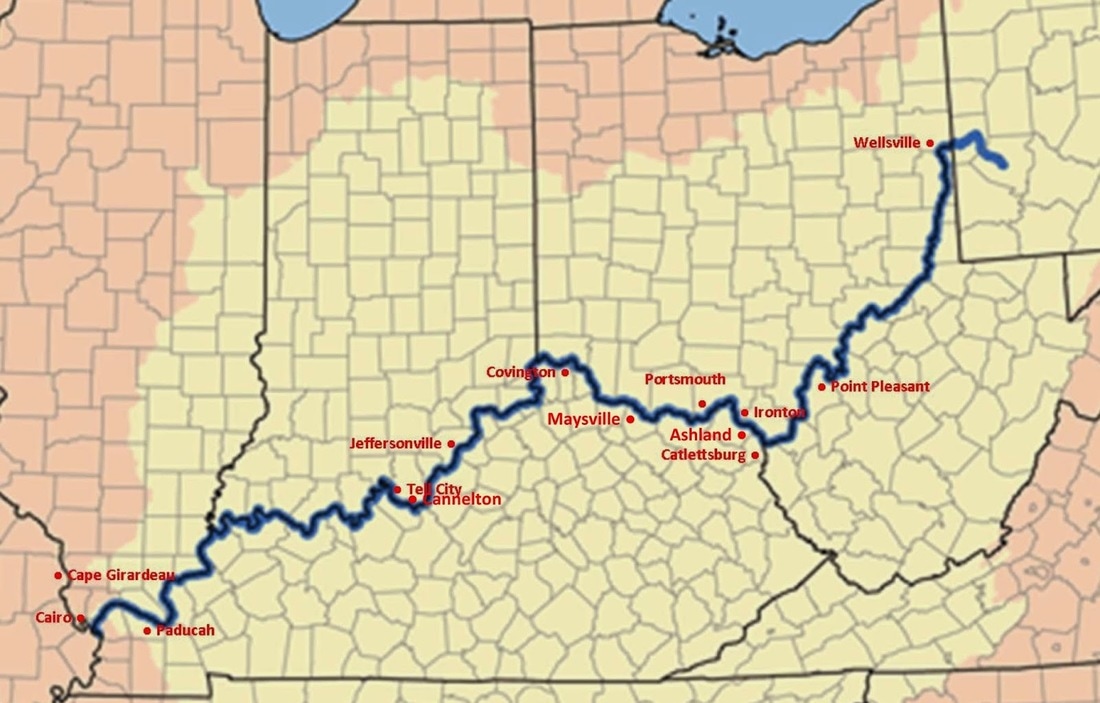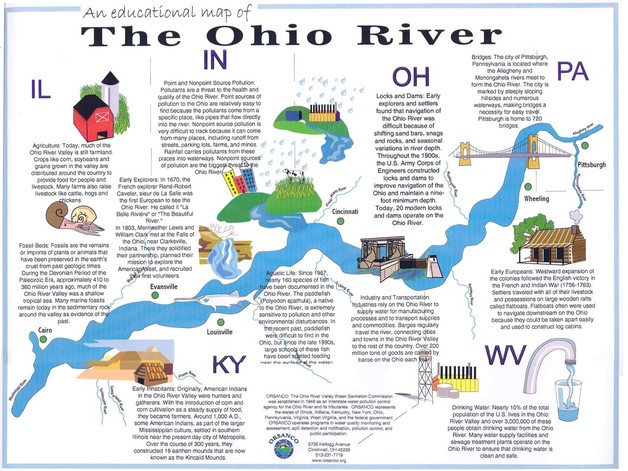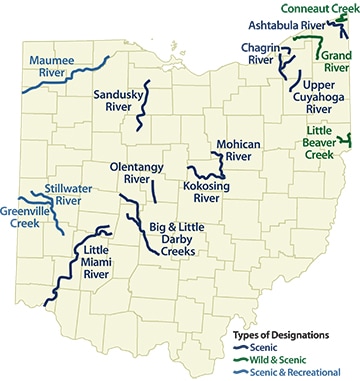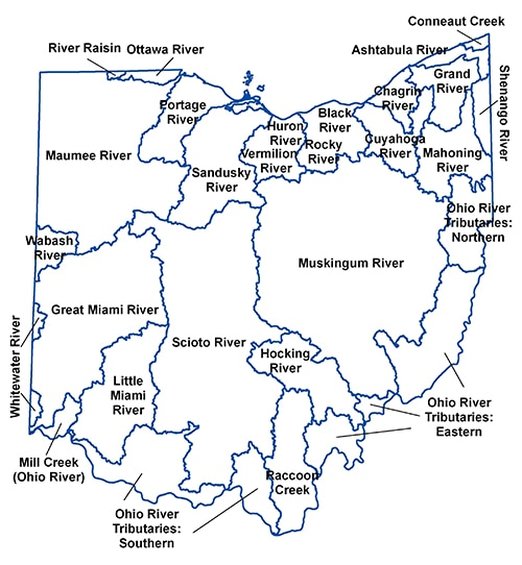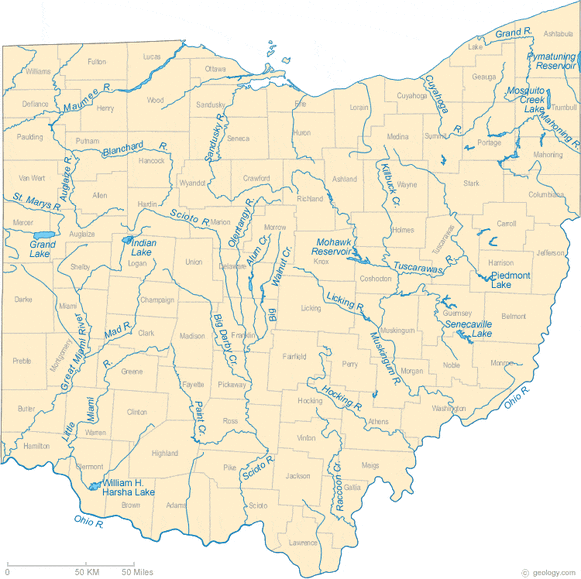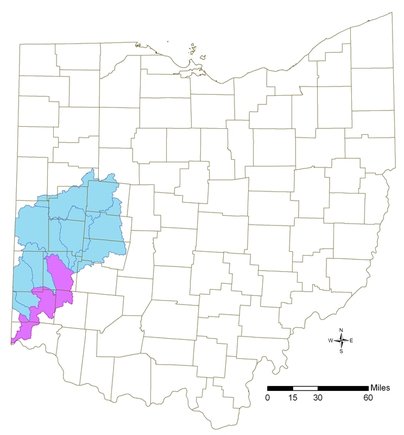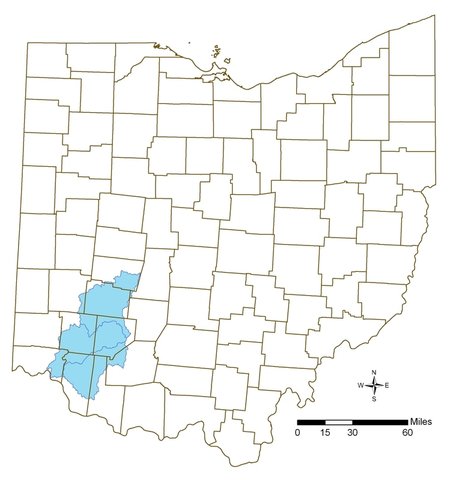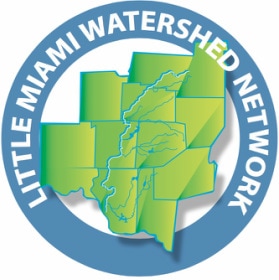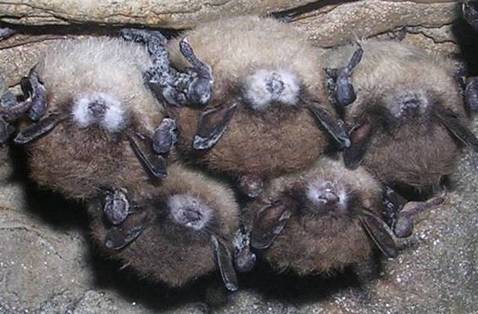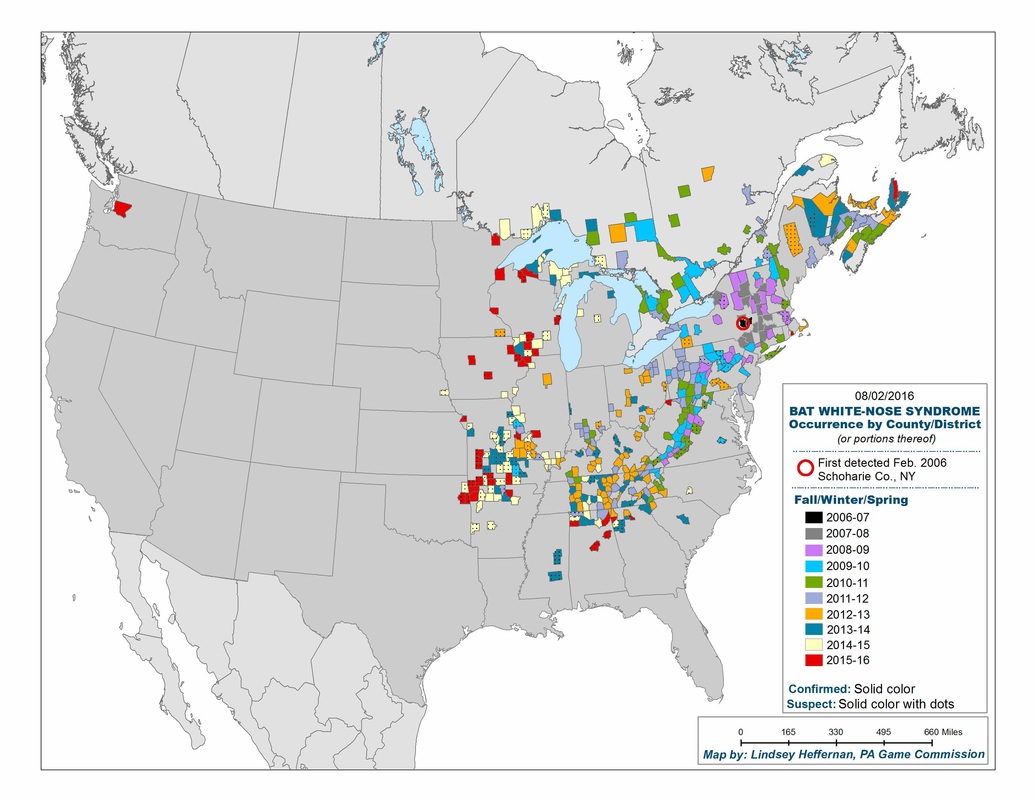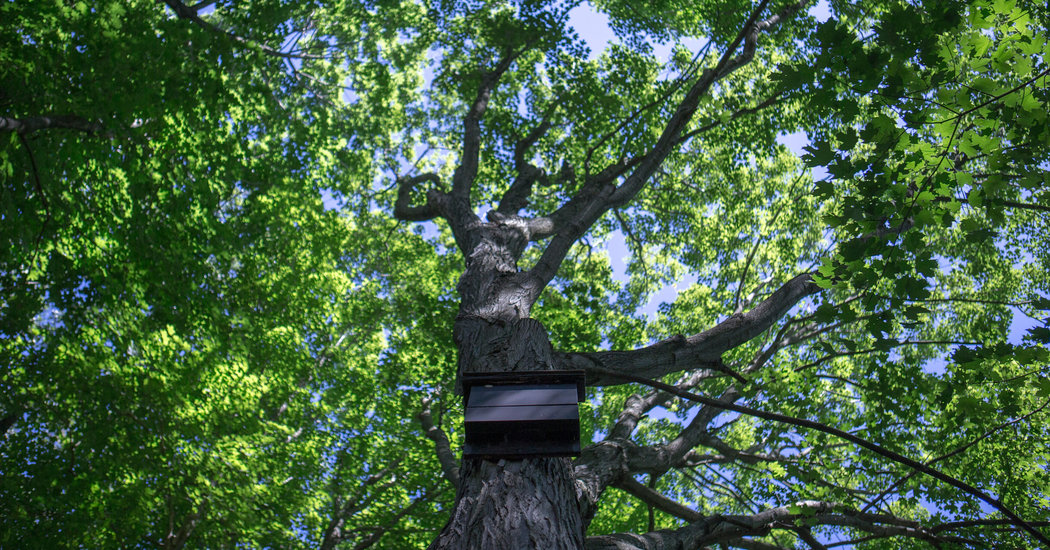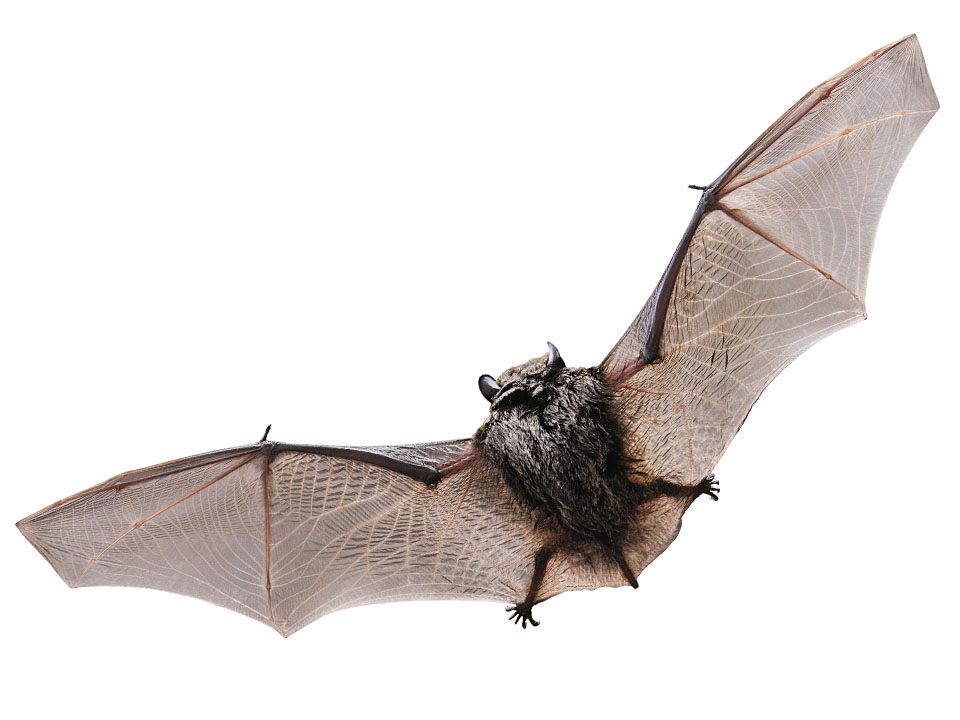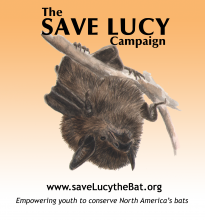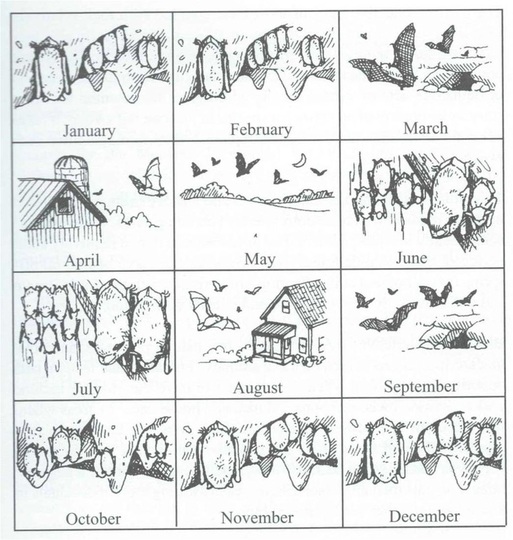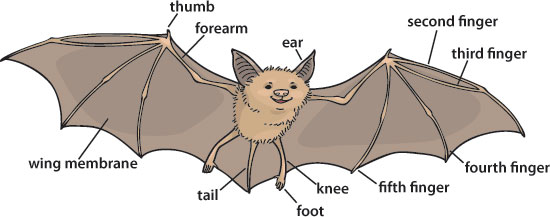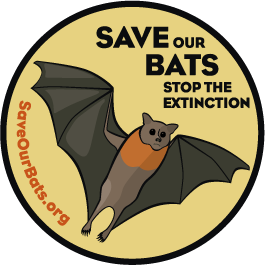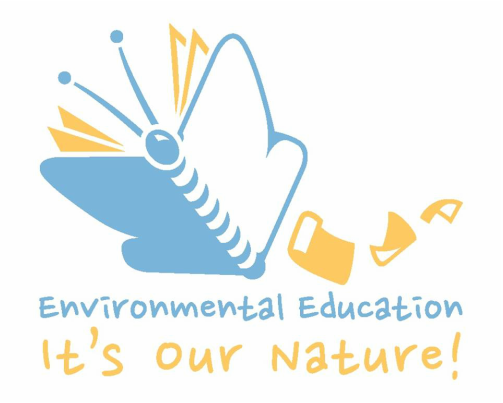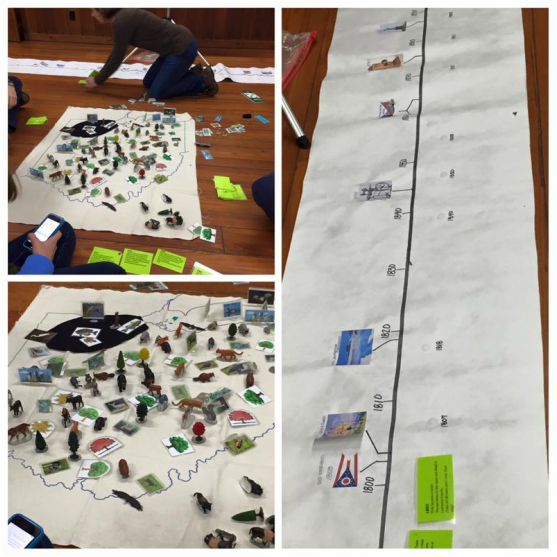|
"Believe it or not, you have a bee to thank
for every one in three bites of food you eat."
Each day, pollinators are responsible for 1 out of 3 bites of food we intake on average. Many pollinators are at a critical point in their own survival; there are various reasons contributing to their decline. One thing is for certain, providing more pollen and nectar sources from native flowering vegetation will improve the health and numbers of our pollinators. Pollinator-friendly gardens and landscapes also revive the health of bees, butterflies, moths, birds, bats and other pollinators.
What is the Million Pollinator Garden Challenge (MPGC)?
The Million Pollinator Garden Challenge is a nationwide call to action to preserve and create gardens and landscapes that help revive the health of bees, butterflies, birds, bats and other pollinators across America. As we explore and enjoy the "great outdoors", take time to make connections between pollinators and the healthy food we eat. http://millionpollinatorgardens.org/partners/
Annual Milkweed Pod Collection:
September 1st and goes until October 30th (pods accepted thru November 1st)
The Ohio Pollinator Habitat Initiative is calling on all Ohioans for another year of Milkweed pod collections! This project started in 2015 as a 7 county pilot and since that time hundreds of Ohioans have worked together collecting thousands of pods across the state.
Milkweed is the host plant for the Monarch butterfly for egg laying and caterpillar rearing. It also serves as a food source for Monarchs and many other pollinator species. . The disappearance of milkweed across the U.S. has contributed to the 80% decline of the eastern monarch butterfly population over the last 20 years. We are working hard in Ohio to change this, and you can help! Here are helpful and simple collection tips: • Before you collect seed pods, become familiar with the common milkweed to avoid harvesting pods from similar plants such as hemp dogbane (a poisonous herb) or swamp milkweed. • It is best to collect the pods when they are dry, grey, or brown. THIS is IMPORTANT! Pod collection starts Sept 1 and runs through Oct 31… please use September as the benchmark time to locate milkweed plants and to keep an eye on the pods while they ripen; then pick them once they look like the picture shown below. • If the center seam pops with gentle pressure, they can be harvested. • Store the pods in paper bags (vs. plastic bags collect unwanted moisture). • Place the date and county collected on the bag when you turn them in. • Keep the pods in a cool, dry area until you deliver them to the nearest collection site as with Warren County Soil and Water Conservation District located in Lebanon, Ohio or you can find the nearest collection site at: www.agri.ohio.gov/wps/portal/gov/oda/divisions/soil-and-water-conservation/find-a-local-swcd/swcd-list
Numerous pollinator species are at risk; many are listed as federally endangered or threatened. Disturbances such as habitat loss, climate change and application of pesticides contribute greatly to diminishing populations and disrupting ecological interactions.
Become a Bee Spotter...The Cincinnati Zoo has teamed up with Bee Spotter to learn more about the bees in the greater Cincinnati area, and we need your help! Simply snap pictures of bees that you see and submit it with a date and location to beespotter.org/cincinnatizoo. An expert will identify the species and add it to the database.
Native & Local Plant Sale:
Visit the Zoo’s EcOhio Farm and Wetland in Warren County, Saturday September 29th, 2019
Learn more about native local plants and about the group "Pollen Nation" that supports pollinator conservation. Multiple beehives on EcOhio Farm are home to thousands of honeybees that help pollinate the entire ecosystem. Observe honeybees up close through an observation frame, and learn how these busy creatures keep people, and their hives, fed.
EcOhio Farm is located at 2210 north Mason-Montgomery Road, Lebanon, OH 45036.
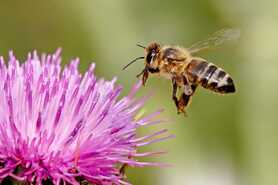
National Geographic - Honeybee Apis mellifera:
animals.nationalgeographic.com/animals/bugs/honeybee/
0 Comments
It's A Rap! Warren County Soil and Water Conservation District wishes to thank our Earth Team Volunteers, Staff, Interns, Partnerships and OCVN's for assisting with Bat Acoustic Surveys this past July. We will highlight some of our results at a "Tech Free Tuesday" Event held on August 6th at Landen Deerfield Park. Come learn about our beautiful, native bats, real bat biofacts and build a batty craft! These programs are FREE to the public! Programming starts at 10:00 am. Address: Deerfield Township 2258 W. St. Rt. 22/3, Maineville, Ohio 45039 What Bats Do For Us One of the most important things bats do for us is consume vast amounts of insects each night; many of these insects are damaging agriculture pests. In fact, pregnant or nursing mothers of certain bat species can consume their body weight in insects each night. Scientists estimate that throughout the United States bats help save farms $3.7 billion a year in reduced crop damage and pesticide use. Bats also save over $1 billion in the corn industry alone. Ohio's bats are "insectivores". Controlling the pest population is not the only thing bats do, they are also pollinators of certain plants and disperse seeds. "Bats are an important part of the ecosystem and do more for us than we even realize." - Sidney Thomson Acoustic Bat Survey photos from the Caesar Creek/Warren County route that also ventures into Clinton and Greene Counties. What You Can Do Warren County Soil and Water Conservation District partners with the Ohio Division of Wildlife (ODNR) to perform acoustic bat surveys in July; this is a perfect way for people to get involved in tracking populations of bats. In addition, ODNR trains others, county-wide, to perform bat monitoring surveys throughout Ohio. Look on ODNR's website for more information. Another great way to help bat populations is to build a bat house and count the number of bats that use the house. Being mindful and minimizing the disturbance of bat habitats or places that bats are known to hibernate helps their over-all population and ecosystems. A big factor that increases bat populations is to avoid the possible spread of White Nose Syndrome by people. Bats slowly reproduce, female bats typically have one pup at a time, so it is important for us to do whatever we can to protect our bats.
Data from this project allows the Division of Wildlife to monitor population changes for bats through long-term assessments. As potential threats to bat populations increase in Ohio (e.g., White-nose Syndrome, habitat destruction), it is imperative that we continue to monitor and assess our Ohio bat populations. White-nose syndrome (WNS) is a disease caused by a fungus that affects bats. It is considered one of the worst wildlife diseases in modern times; the fungus, called Pseudogymnoascus destructans or Pd for short, has killed millions of bats across North America. Pd grows in cold, dark and damp places; it attacks the bare skin of bats while they are hibernating in a relatively inactive state. Pd sometimes looks like a white fuzz on the faces of bats, As the Pd fungus grows, it directly causes changes in bats, making them become more active than usual. Bats with white-nose syndrome may do strange things like fly outside during daytime in the winter. The infected bats burn up fat that is crucial to survive the winter. Besides, Ohio's Bats are nocturnal. In 2007, Biologists first noted bats were sick and dying from white-nose syndrome in caves near Albany, New York. Cave explorers had taken a photo of bats with a white powder on their noses the year before in this same area. Thus, white-nose syndrome has been in North America since at least 2006. WCSWCD Volunteer Opportunities: https://www.warrenswcd.com/volunteer-opportunities.html Acoustic Bat Survey photos from the Little Miami State Park route. Other WCSWCD Wildlife/Ohio's Bats Blog publications: https://www.warrenswcd.com/education-connection-a-blog/sleep-all-day-stay-out-all-night-no-wonder-we-love-our-ohio-bats https://www.warrenswcd.com/education-connection-a-blog/help-protect-bats-and-their-habitats Authors and Contributors; Sidney Thomson, Ben Haynes and Marta Farrell
Top 5 Impacts of Recycling:
Explore ways to Reduce, Reuse and Recycle at Home, at School, at Work & in your Community... Learn how reducing, reusing, and recycling can help you, your community and the environment by saving money, energy and natural resources. Recycling programs are managed at the state and local level—find information on recycling in your community. "Student project leads to 1st foam tray recycler in state" "What began as a Little Miami middle school research project has led to a first-of-its-kind Styrofoam tray recycler in Ohio." Instead of sitting in a landfill for centuries, used Styrofoam school lunch trays are being converted to paving bricks. After undergoing a process called densification (short 10 hour process), the trays are converted into a single square brick that feels like glass or tile but is solid as a rock. Densification involves removing air from Styrofoam and using heat to melt it into a liquid resin that, when cooled, forms bricks from bundling multiple foam lunch trays. Foam lunch trays turned into reusable products: Little Miami is the first school district in the state of Ohio to use a StyroGenie machine to create a closed-loop recycling system for the foam trays used in some of the district’s cafeterias. Findings included that this machine presented a possible cost effective path to reduce the schools’ foam tray footprint by more than 90%, reducing trash volume and waste disposal costs.
Save money by decreasing waste removal costs: "The StyroGenie is a low cost machine that is easy to use and is a responsible choice for the environment. Standing at six feet by four feet, the StyroGenie can hold up to 1200 trays in each cycle. While it takes about ten hours for the trays to be densified, the machine only uses the same amount of electricity as an average hair dryer. In addition, it operates without any moving parts or harmful emissions, making it safe for the environment." - Little Miami Schools Food Service Director, Rachel Tilford, purchased the StyroGenie machine for the Little Miami District after learning about its existence through a group of middle school students (members of a local First LEGO League team). The team’s challenge in the 2015 competition was to identify a piece of trash to research and invent a solution to "help the trash problem". The students chose Styrofoam cafeteria trays; they researched ways on how to reduce waste in Little Miami lunchrooms. That’s when they found out about the StyroGenie. View in the News video: Thank you Mrs. Tilford for taking extra time to meet with Warren County Soil and Water Conservation District and with our LMHS Intern and Volunteer, Ms. Honigford. We also extend our gratitude to LMJH Principal, Mr. Ryan Cherry, for sharing more about the recycling efforts on a "school wide" basis. We enjoyed learning more about this phenomenal idea and how the idea came about.. We hope more districts can "get on board".
Other StryoGenies in the news - Lake Hills Elementary School, Michigan City, "The school's trash output in the cafeteria has gone down from 52 to 15 bags a day." The cost of the StyroGenie for Lake Hills Elementary was $12,000, "but it should pay for itself in two years from refuse disposal savings." Plus, "It's the right thing to do," - STEM coordinator at the school said, Bricks were painted and placed in the school garden for decorative purposes and for a walkway incentive. The city's street department was contacted for additional use for the bricks. "In addition to promoting a safe environment, the Styro-Genie shows students what is possible if they open up their minds." Lake Hills Elementary is also preparing kids to be problem solvers and creative thinkers as to solve some of the problems the world might have in the future. Resources for Students and Educators: https://www.epa.gov/recycle/reduce-reuse-recycle-resources-students-and-educators Office of Environmental Education: epa.ohio.gov/oee/ https://epa.ohio.gov/oee/#131364250-environmental-education Grants: Ohio EPA's competitive grants provide opportunities for communities, local governments, businesses and non-profit organizations to establish and implement recycling, recycling market development, litter prevention and scrap tire recycling programs. See what grants are awarded on an annual basis. Applications are generally available in October and the deadline for application is early February. https://epa.ohio.gov/ocapp/recycling#1843210477-community-and-litter-grant Additional Funding Opportunities: Ohio EPA has funding available for a wide variety of environmental projects such as helping communities plan and complete water and wastewater projects, promoting environmental education and reducing the impact of nonpoint source pollution. For more information about the funding sources available, click on the link below or view a summary of funding programs. https://epa.ohio.gov/Do-Business/Get-Help/Financial-Assistance Rural Action’s Zero Waste Pledge Program encourages local organizations to strive for zero waste. They help businesses and organizations achieve their goals by working one-on-one with them to identify waste that is being produced and ways to reduce it. The zero waste pledge shows the business is committed to using natural resources wisely, increasing its environmental consciousness, and supporting the local economy through waste reduction, recycling, composting, and reuse. http://ruralaction.org/programs/zerowaste/our-services/pledge-program/ We are pleased to have Little Miami High School Senior, Ms. Honigford, intern and volunteer with Warren County SWCD and the Warren County Water Department. We wish Ms. Honigford the best in her endeavors as she further explores environmental engineering careers. https://www.environmentalscience.org/careers
Green Umbrella’s Local Food Action Team (LFAT) is working to strengthen our regional food system by encouraging all consumers to take the 10% Shift: Eat Local Challenge.
PROMOTE LOCAL FOOD CONSUMPTION
Green Umbrella Regional Sustainability Alliance Mission: The Local Food team brings together local farmers, distributors, farmers markets, cooperatives, community gardeners, community supported agriculture organizations, health professionals, restaurants, extension services, educational organizations, government entities and processors to develop strategies to increase the demand for local foods, increase production and identify new markets for local foods. You can participate by taking the 10% Shift to Local Food and pledging to shift 10% of your food budget to purchase local foods. Learn more here! You can also join in the work by joining Green Umbrella and attending Local Food Action Team meetings--typically held the first Thursday of the month. greenumbrella.wildapricot.org/Local-Food Action Plan:
Greener Living: https://www.epa.gov/environmental-topics/greener-living
Information about state-level Master Gardener Volunteer programs and activities is available at http://mastergardener.osu.edu. Warren County Extension will be hosting the next Master Gardener volunteer class beginning in September 2018. This training will run through November. If you have any questions contact Beth Giffin at 513.695.1311 or [email protected] . The application deadline is August 17, 2018. You must be accepted to the program, attend an eight-week class, and complete 50 hours of volunteer activity. More information, including costs, a program application and a flyer can be found here: https://warren.osu.edu/program-areas/master-gardener-volunteers/becoming-master-gardener Active Master Gardner Projects in Warren County, Ohio: https://warren.osu.edu/program-areas/master-gardener-volunteers/active-master-gardener-projects Working with county Extension personnel, Master Gardeners provide such educational services to their communities as: answering gardening questions from the public; conducting plant clinics; gardening activities with children, senior citizens or disabled persons; beautifying the community; developing community or demonstration gardens; and other horticulture activities. Contact a Project Leader to Volunteer!
Local Ohio State University Extension Warren County Office: https://warren.osu.edu/program-areas/master-gardener-volunteers Ever wanted to explore your local stream, but didn’t know exactly where and how? This summer Warren County SWCD are hosting stream encounters where residents can enjoy their local streams through guided educational opportunities and cleanups. While participating in beautification efforts, you will also learn about how we monitor for stream health. To register, go to: https://www.warrenswcd.com/stream-encounters.html Check out these Warren County Events: Harmon Park Stream Encounter - Tue, July 10, 10am – 12pm Location: Harmon Park, 300 S East St, Lebanon, OH 45036, USA (map) St. Susanna Stream Encounter - Wed, August 1, 10am – 12pm Location: St. Susanna Catholic Church, 616 Reading Rd, Mason, OH 45040 (map) Summer is the ideal time to connect with nature or #EscapetheIndoors. During this Great Outdoors Month explore different activities that you can enjoy outdoors. Enjoy planing a fishing, boating, camping, hiking or even biking adventure! https://www.greatoutdoorsmonth.org/ Event Planning: www.greatoutdoorsmonth.org/activites-and-events Volunteer Stewardship Opportunities: https://www.warrenswcd.com/volunteer-opportunities.html www.greatoutdoorsmonth.org/stewardship Earth Team Volunteer: www.nrcs.usda.gov/wps/portal/nrcs/main/national/people/volunteers/ National Trails Day As of June 2, kids and families can download the new Junior Ranger "Let's Go Fishing!" Activity Booklet or pick up printed copies at a growing number of parksover the summer. Follow #GoFishingInParks. Warren County Ohio Park District: www.co.warren.oh.us/parks/ 2018 Caesar Creek Events: parks.ohiodnr.gov/portals/parks/PDFs/things_to_do/naturalists/CaesarCreek2018.pdf Above Photos taken at Caesar Creek Nature Center featuring our wonderful host - Sarah Blair/ODNR, Ohio Certified Volunteer Naturalists, Franklin High School Environmental Classes, Franklin HS Environmental/Biology Teacher Mr. Keith Vinson - 2017 Warren County SWCD Educator or the Year, www.caesarcreekstatepark.com/nature-center.html OHIO'S SCENIC RIVERS Celebrates 50 Years of Conserving Rivers, lakes and oceans - our blue spaces benefit both our physical and mental well-being. We rely on rivers for clean drinking water and as places of recreation and rejuvenation. Even the sound of moving water has a calming and restoring effect on the mind. Whether you are looking for a peaceful picnic or rest spot by a babbling brook, a scenic river-front hike or a place to paddle, you can find activities along Wild and Scenic Rivers that contribute to your good health. Wild Scenic Rivers Health & Safety: www.rivers.gov/wsr50/files/health-safety-infographic.pdf Roughly 65% of our nation’s drinking water comes from rivers and streams. Toxins that contaminate water can harm the human body, meaning that "good health starts with good water chemistry".
Many plants and some animals, such as freshwater mussels, can filter water by removing harmful chemical compounds. Since humans need assistance making sure the water we ingest is clean, protect your own health by understanding the ecosystems responsible for your clean water and helping your local watershed group clean up litter - thus removing water pollutants. Warren County SWCD Educational Services and Programs: https://www.warrenswcd.com/education.html Glaciers to Great Lake: Ohio would not be what it is today without the impact of glaciers during the Ice Age. Glaciers left behind more than just till deposits in Ohio, glaciers also helped make Lake Erie. Check out this video and learn more about Ohio's Ice Age: http://www.pbs.org/video/wptd-our-ohio-glaciers-great-lake/ (Running time: Approx. 2 minutes) - WCET Cincinnati, Our Ohio series Glacial Grooves State Park, Kelley's Island These glacial grooves were carved out during the Pleistocene Epoch (the last Ice Age). Stories in the Stones Underneath the soils of Ohio lies a vast record of history embedded in rocks and minerals: http://geosurvey.ohiodnr.gov/news-events/multimedia-library Etched section of hand sample of Columbus Limestone from quarry on Kelley's Island. The circular feature is a crinoid columnal. Glacial Map of Ohio: geosurvey.ohiodnr.gov/portals/geosurvey/PDFs/Glacial/glacial.pdf Flint is Ohio's official gemstone. Flint Ridge Flint is renowned for its color and beauty. In pre-historic times, flint was used by American Indians for tools, including knives and spear points. The flint polished stone is valued in jewelry making today. Licking and Western Muskingum Counties are known for having the most famous deposit of flint in Ohio; this area is better known as Flint Ridge. Flint Ridge Flint became Ohio's official gemstone in 1965.
Ohio's Geological Walk Through Time Located at the Natural Resources Park on the Ohio State Fairgrounds, this exhibit offers a unique learning experience for anyone interested in Ohio's natural history, including fossils, rocks & minerals, and more. www2.ohiodnr.gov/ohio-state-fair/geological-walk
Geoscience News and Information - more on rocks, minerals...geology.com/ Learning about rocks and minerals gives a deeper appreciation of the story behind the scenery in our National Parks. - National Park Service Yellowstone National parkRocks and minerals are all around us and used in our everyday lives. They also help us to develop new technologies. Rocks and minerals are used in building material, cars, roads, appliances and even in cosmetics. Humans need to consume minerals on a daily basis in order to maintain a healthy lifestyle that includes strengthening the body. Abiotic features, like rocks and minerals, play a valuable role in our natural systems such as providing soil nutrients in Redwood where the tallest trees in the world grow or provide habitat like the cliffs at Grand Canyon National Park where endangered condors nest. We can learn more about Earth's materials, structure, and systems through studying rocks and minerals. "Natural objects, such as rocks and minerals, contribute to the beauty and wonderment of the National Parks and should be left, as they were found, so that others can experience a sense of discovery." - https://www.nps.gov/subjects/geology/rocks-and-minerals.htm Glacier National Park, MTWaterton - Glacier International Peace Park World Heritage Site Glacier's pristine forests, alpine meadows, rugged mountains, spectacular lakes and wildlife are truly spectacular sites. dEATH vALLEY nATIONAL pARK, ca, nvHottest, Driest, and Lowest National Park: Steady drought and record summer heat make Death Valley a land of extremes in this "below-sea-level basin". Each "extreme has a striking contrast": towering peaks are frosted with winter snow, rare rainstorms bring vast fields of wildflowers, lush oases harbor tiny fish along with refuge for wildlife and humans. "Despite its morbid name, a great diversity of life survives in Death Valley."
Educators and Volunteers - "Natural Parks are America's Largest Classrooms!" https://www.nps.gov/teachers/index.htm Science in your National Parks: https://www.nps.gov/nature/index.htm
Communities across the globe are celebrating their rivers today, seeking to educate people about the threats facing our rivers, and learning about better water and energy solutions. Warren SWCD wants to take a moment to recognize the importance of our own local Ohio rivers! Ohio has 254 principal streams and large rivers in Ohio, comprising 5,679 linear stream miles (http://www.epa.ohio.gov/portals/35/tmdl/2012intreport/ir12sectionbfinal.pdf). The Ohio River forms the entire 451-mile southern boundary of Ohio, though the entire river stretches 981 miles from Pittsburgh, PA to Cairo, IL, and touches 6 states. The Environmental Educational Council of Ohio and the Ohio EPA Of Ohio's rivers, 14 have been designated Scenic Rivers. Scenic rivers are classified according to the outstanding qualities a stream possesses. The Scenic Rivers Act provides three categories for river classification: wild, scenic and recreational. Stream length, adjacent forest cover, biological characteristics, water quality, present use, and natural conditions are all evaluated when considering designation. In 1968, Ohio pioneered the river preservation movement with the passage of the nation's first scenic rivers act. A state program was created to protect Ohio's remaining high quality streams for future generations. Scenic rivers retain most of their natural characteristics at a time when many rivers reflect the negative impacts of human activities. Scenic river designation is a cooperative venture among state and local government, citizen groups, and local communities within a watershed. The designation process depends ultimately upon support and protection authority of local governments and citizens. The ODNR studies the proposed river to determine whether it meets the scenic river criteria. All interested parties, including state and local officials, community groups and concerned citizens, meet to discuss the scenic rivers program and to encourage local support for the protection of the river as a natural resource. A legal notice of the intent to designate a river as wild, scenic or recreational is issued by the Director of Ohio DNR 60 days prior to the declaration to allow sufficient time for public comment. Following the public comment period, ODNR responds to public concerns and the Director may declare a river a component of the state scenic rivers system. On April 23, 1969, the Little Miami River which flows through Warren County earned the distinction of becoming Ohio's first designated State Scenic River.
watersheds of warren countyWhat is a watershed? A watershed is the area of land that drains into a lake or stream. Watersheds can be small - like the area that drains into the creek behind your house. Or, watersheds can be large - consider all the land, streams and rivers that drain into the Ohio River or Lake Erie (epa.ohio.gov) Great Miami River watershed (blue); Lower Great Miami River watershed (purple) Little Miami River watershed Love your watershed!Want to help keep the Little Miami River watershed clean and protect surrounding habitat? There are simple steps you can take at home! 1. Use less water Every time you flush your toilet or leave the water running while brushing your teeth, it increases the load on your sewer system. Conserve water. 2. Keep your car repaired When oil leaks from our cars it is eventually sent down storm drains and ends up in the watershed. If your car has sprung an oil leak, get it fixed. Also, be careful while adding oil and make sure any used oil is properly recycled. 3. Use organic gardening techniques Go with natural fertilizers and stick to the directions. Make sure you do not overuse or apply on days when they are likely to be quickly washed away by rain. Just like automotive oil ends up in the watershed, so does a large amount of the fertilizers and pesticides you use in your garden. This causes rivers and lakes to get a huge dose of nitrogen which makes algae grow abnormally. The chemistry of our freshwater lakes and streams gets totally out of whack and fish kills are common, along with a host of other problems. 4. Compost and contain yard wasteToo much organic material clogs streams and when it breaks down, it can upset the water chemistry. Compost yard waste and make sure it’s in bins so it doesn’t wash away during a heavy rain. 5.Deal with household chemicals and medicines properly Check your local environmental health agency or solid waste department for drop-off locations or specially scheduled pickups for toxic household chemicals, like solvents, motor oil and paint. Do not flush unused medicines down the toilet. These are starting to turn up in local drinking water supplies. Find the best way to dispose of them locally. Also, use natural cleaning products around the house. 6. Go sustainable Frequent your local farmer’s market and find organic farmers. Doing business with them helps keep fertilizers and pesticides out of the environment and it also reduces the need to truck food over long distances, which reduces all the pollution associated with transportation. Also, Ohio is a free choice state for energy suppliers so you can buy electricity from sustainable sources and still be serviced by your local utility company. You can research 100% green energy suppliers such as CleanChoice Energy and Star Energy. It will reduce acid rain, which is one of our biggest problems. 7. Don’t litter While one may think we should not have to remind folks not to litter, still some people have not gotten the message. Go to any river or lake popular with fishermen and you will find plastic wrappers from lures and bait at the water’s edge. And, if you litter in your neighborhood, it will make its way to a storm drain and get into our streams, lakes and eventually into the ocean. Finally, why not take it a step further and volunteer for a river or lake cleanup day project? Check out http://www.lmriverkleeners.org/index.html for more information and volunteer opportunities!
The Division of Wildlife uses information from Bat Acoustic Survey Monitoring to help track our bat species, population rates and document the progression of White-Nose Syndrome (WNS). Sadly, signs of WNS has officially shown up far west in the state of Washington as of 2016.
Find out up-to-date information about White-Nose Syndrome (WNS), the deadly disease that affects North American bats by cilcking on the black box below. Extensive groups of state, federal, tribal, university, and non-governmental partners are helping minimize the impacts of White-Nose Syndrome. They also need our help! #Save the Bats
Ohio Department of Natural Resources - Contact Information:
www.whitenosesyndrome.org/partner/ohio-department-natural-resources In the winter of 2006-07, the New York Department of Environmental Conservation found approximately 10,000 bats of the genus Myotis (little brown bats, M. lucifugus, and Indiana bats, M. sodalis) dead and dying in four caves in New York. Since 2006, White-Nose Syndrome (WNS) has killed millions of bats in eastern North America, including several Myotis species, Perimyotis subflavus (Tri-colored bat), and Eptesicus fuscus (big brown bat). In March 2011, the first Ohio case of WNS was confirmed in an abandoned mine in Lawrence County, Ohio. Several counties in Ohio have been confirmed as WNS positive, including Lawrence County in 2011, 5 counties were added in 2012 (Geauga, Summit, Cuyahoga, Portage, and Preble), and 10 counties added in 2013 (Medina, Jefferson, Union, Wayne, Ashland, Athens, Clinton, Madison, Warren, and Sandusky). Updates on WNS in the State of Washington: wdfw.wa.gov/conservation/health/wns/ www.whitenosesyndrome.org/news/deadly-bat-fungus-washington-state-likely-originated-eastern-us
Bats Truly Need Our Help:
Devouring 1,000 Mosquitoes nightly; Bats are now welcome guests as "Zika Fears Rise": www.nytimes.com/2016/07/05/nyregion/devouring-1000-mosquitoes-an-hour-bats-are-now-welcome-guests-as-zika-fears-rise.html?_r=0
Why should you put up a bat house?
Bat houses benefit bats, you, your family, communities, farmers, gardeners and the ecosystem as a whole.
See Additional Bat House Designs:
—Bat Facts:
Over 1,000 Species Worldwide —45 species native to U. S. —11 species in Ohio (2016) —The only true flying mammal —Primarily nocturnal, but most times can be seen flying about in the early evening (crepuscular)
Teachable Moments:
The Save Lucy Campaign was created to raise awareness of White-Nose Syndrome
and its devastating impact on North American Bats.
Creatures of the Night
The Order name ‘Chiroptera’ means “hand-wing”
—Order Chiroptera =“hand wing” —Megachiroptera =“large “bats: Found in tropics - —large fruit bats/flying foxes —Microchiroptera =“small” bats: all bats in U.S. —Varied diets and ID characteristics Ohio is home to thousands of environmental professionals working every day to make the world a better place. The Environmental Professionals Network (EPN) is a free service which the Ohio State University School of Environment and Natural Resources (SENR) provides. The network is truly a community-driven effort. The Environmental Education Council of Ohio (EECO) Philosophy: Environmental Education (EE) is education in, about, and for the environment. Education in the environment helps people develop sensitivity to their surroundings and the natural world. Education about the environment promotes understanding of the natural, physical, and social systems that make up our environment. Education for the environment motivates people to work to improve the environment. The Environmental Education Council of Ohio (EECO) provides leadership and resources for environmental education throughout the state of Ohio. EECO serves all Ohio citizens. To learn more, click on the EECO Website link below: Connect on Facebook:
|
Details
Author:
|
||||||||||||||||||||||||||||||||||||||||||||||||||||
|
|
Contact:PHONE: (513) 695 - 1337
EMAIL: [email protected] HOURS: Monday - Friday 7:30am - 4:00pm (except holidays) Connect:Warren County Soil & Water Conservation District Copyright © 2016
Warren SWCD Privacy Notice. Emails are serviced by Constant Contact. Constant Contact's Privacy Notice. |
